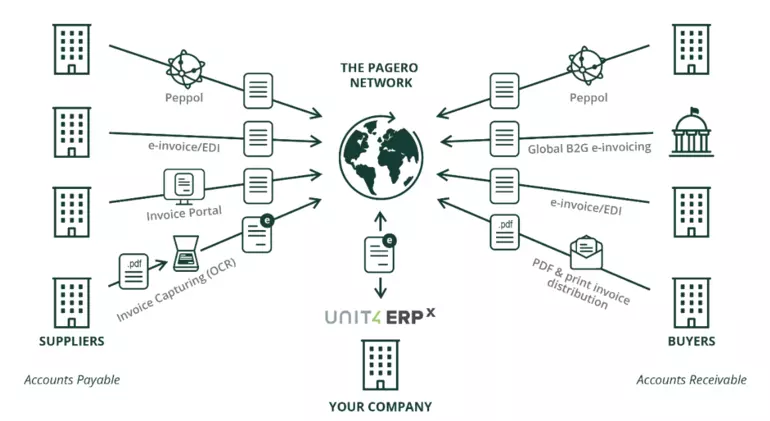
Business digitalization: what it really means and 3 tips to get started
Digitalization is by no means a new concept. We hear about it all the time, both in our personal and business lives. But precisely because the term is everywhere, it’s easy to lose focus of what it really means and the benefits it brings for companies. For this article, we invited Pagero, Unit4 partner and leader in digitalization and automation of financial processes, to help us make sense of the topic.
The last year and a half have changed the way of doing business and accelerated pre-pandemic trends such as digital transformation. In a matter of weeks, it was necessary to reduce physical interactions, manual labor and paper-based processes, as well as start managing businesses away from company offices.
Across all industries, digital solutions were vital to keep operations going during Covid-19 and will be key to make the most out of the recovery period, as well as to prepare for future challenges.
But what does it mean to go truly digital?
Digitalization (or digital transformation) is the integration of digital technologies in the way organizations operate, across their different areas, services and channels with customers and other stakeholders.
A digital technology is an electronic tool, device or system that generates, processes or stores data, making it possible to compress and easily transmit large amounts of information. However, a true digital transformation process goes beyond buying and using a new tool or software, and requires an honest organizational commitment to evaluate, challenge and reconfigure business processes. Only then should companies select consciously among newly available technologies to digitalize and automate operations, to truly increase efficiency and see results. As you see, it’s not about acquiring technology just for the sake of doing so, but about finding a path and a pace that works for your organization, clients and suppliers. Here are some tips to help you begin:
1. Getting started: identifying improvement opportunities
Organizational changes can sometimes feel overwhelming, and understandably so.
At Pagero, our advice for you is to select a process in your business, understand where there is room for improvement, and start your digitalization journey. Let’s take, for instance, your accounts payable process. Do you still receive paper invoices from your suppliers? If so, you may be familiar with the tedious challenges of manually entering, verifying and processing the invoices, as well as dealing with frequent errors. In the context of accounts payable, going digital means, among other capabilities, receiving your invoices electronically, directly on your ERP system, eliminating manual work, lowering costs, and increasing straight-through processing and control. Digitalizing your AP process also allows you to reduce risks and errors, and gain visibility of spend, because you will be collecting all your invoice data in one place, making it possible to conduct searches and comparisons, something you simply cannot do when all you have is piles of papers. Other benefits of the digital transformation include supporting the sustainability goals of your organization by reducing the use of paper, avoiding late payment fees and seizing discounts, and improving your communication and relationship with your suppliers thanks to reduced mistakes and reprocessing (and faster payments.)
2. Seeing the bigger picture: gathering quality data for strategic decisions
As mentioned in our previous example, going digital does not only solve your current headaches and the time-consuming tasks you do today, but also provides you with valuable business information for tomorrow. Whether it is your accounts payable or your accounts receivable, digitalizing operations allows you to collect and access quality data from orders, invoices, and other documents, and identify trends, patterns, pricing insights, and buyer preferences. By being able to see “the bigger picture” of the finances and spend of your business, you will be better informed to make the right choices for your company, now and in the future.
3. Putting it all together: integrating with your existing systems
While embarking on a digital transformation project, make sure you are not creating more problems that the ones you are trying to solve. Remember, you are doing this to simplify your operations, not to end up with more complexity in the form of disconnected systems. When thinking about digitalizing, look for a service provider that can easily integrate and work with your current ERP system. By making sure your digital business processes do not need any system or format changes, you can go digital much faster and make the most of your transformation project.
Enjoy your digital journey!

About our partner Pagero:
Pagero takes care of the technical and regulatory requirements across your entire order-to-cash, purchase-to-pay and freight processes, to give you data accuracy and security, transparency and real-time visibility. All this integrated into your Unit4 ERP system.

Become an extension of our organization
Join our global ecosystem of partners and grow your business by providing customers with the best ERP solutions to help them achieve their goals — with the Unit4 Partner Program.





